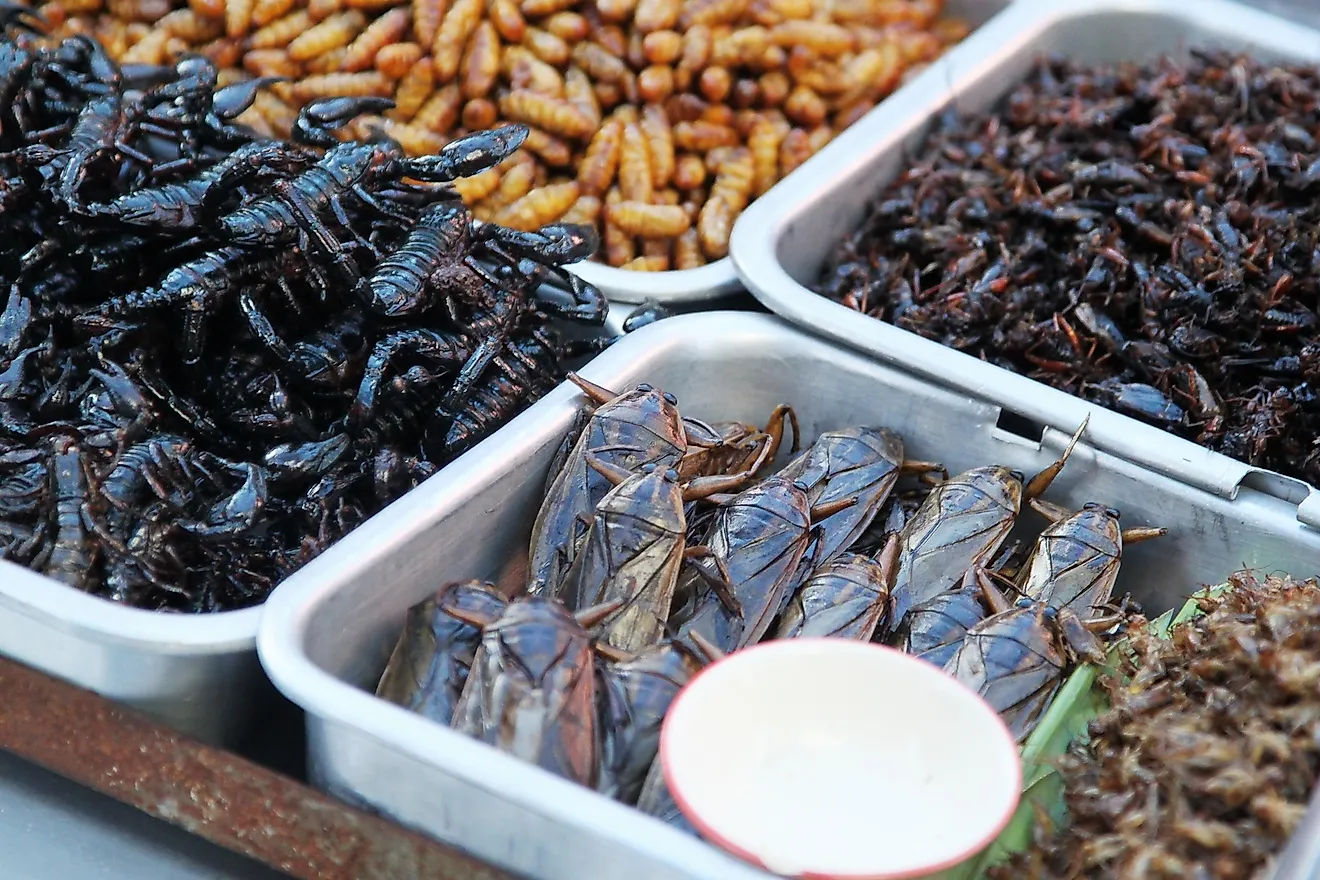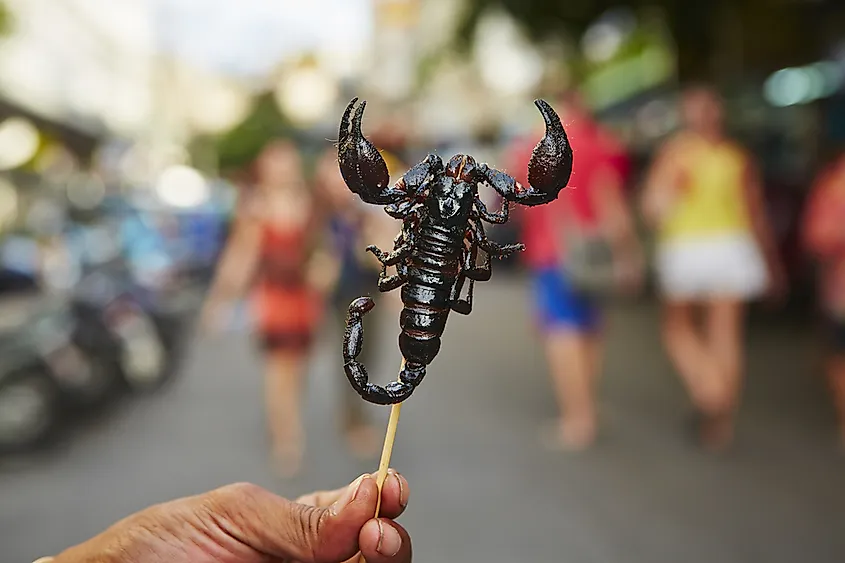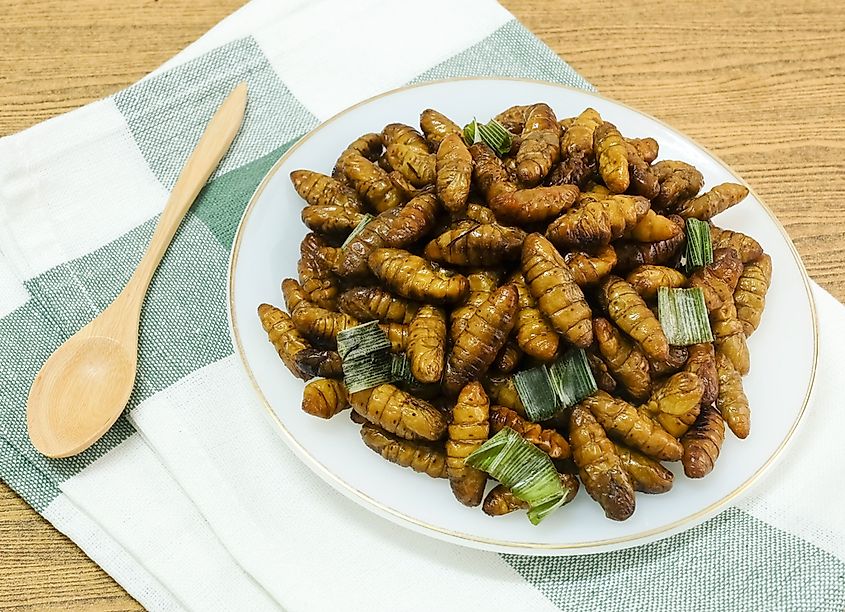Do People Really Eat Worms And Scorpions?

Discover the taste of worms, scorpions, and stinkbugs as they are eaten across the world, including the US.
Please do not treat this list as a cookbook, as most wild insects are not as safe to eat. None of them should be eaten raw. If you are allergic to shrimp, shellfish, or dust, never eat an insect, even a cooked one.
Scorpions And Worms
Scorpions are arachnids and not insects, but they are a popular and tasty snack with the flavor and shell texture similar to soft-shell crab with a slight bitterness. In Vietnam, Thailand, and China, they are roasted or deep-fried and sold on skewers as a street snack or “lollipop.” The stinger can be left on a well-cooked scorpion as the venom breaks down when heated. Black Forest Scorpions taste nutty when roasted; Dried Manchurian scorpions have a slightly bitter shrimp-like taste.

Mopane worm is the casual term for the caterpillar of the emperor moth Gonimbrasia Belina living in warmer parts of Southern Africa, mainly in mopane trees. Mopane worms are hand-picked in the wild by women and children. This sizeable edible caterpillar is known under many names: madora, infinkubala, ifishimu (in Zambia), or amacimbi. Mopane worms are a source of protein for millions of people in the region. They are freeze-dried for preservation and can be rehydrated and cooked. Testers described them as “crunchy outside, chicken-flavored inside, with a bit of a gritty, muddy aftertaste.” They are also marinated and cure-dried, which gives them “an earthy jerky” taste.
Mealworms And Flies
Mealworms are the larva of the mealworm beetle. They are one of the four edible insect sources that are currently considered to have an industrial value in the Western world, mainly for preparing protein-rich flour. They are cooked in a wide variety of ways and are said to taste like a nutty, greasy shrimp.
Midge Fly is a tiny fly harvested in Afrika and pressed into bricks called Kunga cake, which then can be cut into pieces and roasted or fried. Most Western testers, however, found it impalatable.
May Bug, Grubs and Various Worms
The excessive use of pesticides in the 20th century caused may bugs (cockchafers) to almost extinct, and their dietary properties are practically forgotten. But in the past, when they were abundant, cockchafers were eaten comparatively widely. Cockchafer soup was considered “gourmet” in France, Germany, and neighboring countries up to the mid 20th century. They were also eaten like shrimp, roasted, and then pulled out of the shell.

Sago grubs are the larvae of capricorn beetle (Rhynchophorus bilineatus). The larvae are white with a dark head, plump, and juicy. They can reach almost 2 inches in size. The larvae are an essential rural staple high in protein and minerals. Depending on the region, this grub is eaten raw and live from the tree, roasted on skewers, or fried in sago flour and then wrapped in a sago leaf. Sago Delight (fried Sago grubs) is a delicacy in Malaysia and Indonesia.
Coconut worm is a similar species of beetle (Rhynchophorus ferrugineus), which specialize in coconuts. In Mekong River delta, they are known as Duong Dua - both the name of the beetle and the Vietnamese dish made with it. They are considered a harmful species as they destroy young palm trees, and breeding them is prohibited. Duong Tra La (Date-palm worms) is their cousin specializing in date palm trees; each tree has only one worm which occupies it reaches the beetle stage. Reportedly, all three species taste like bursting toffee grease; when raw and bacon fat when cooked.











